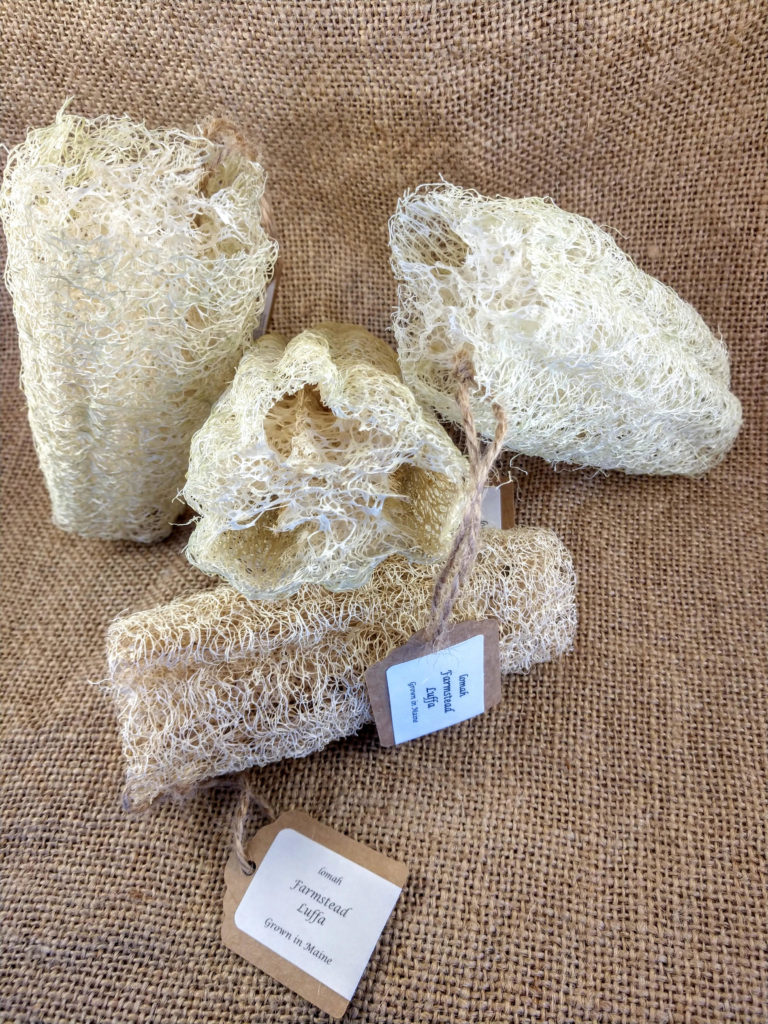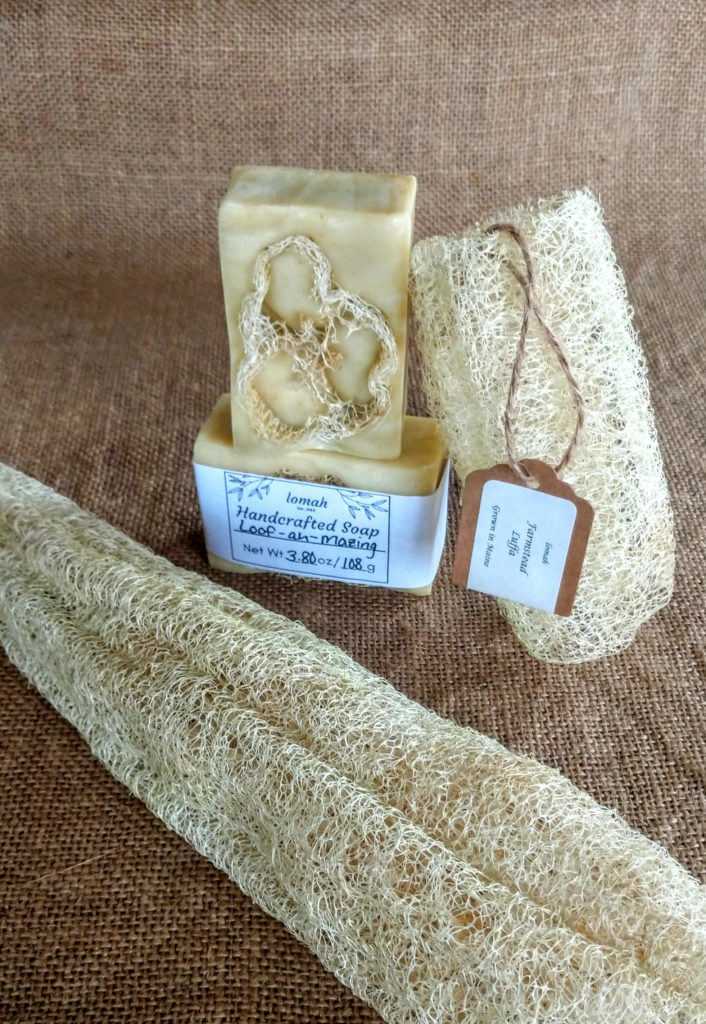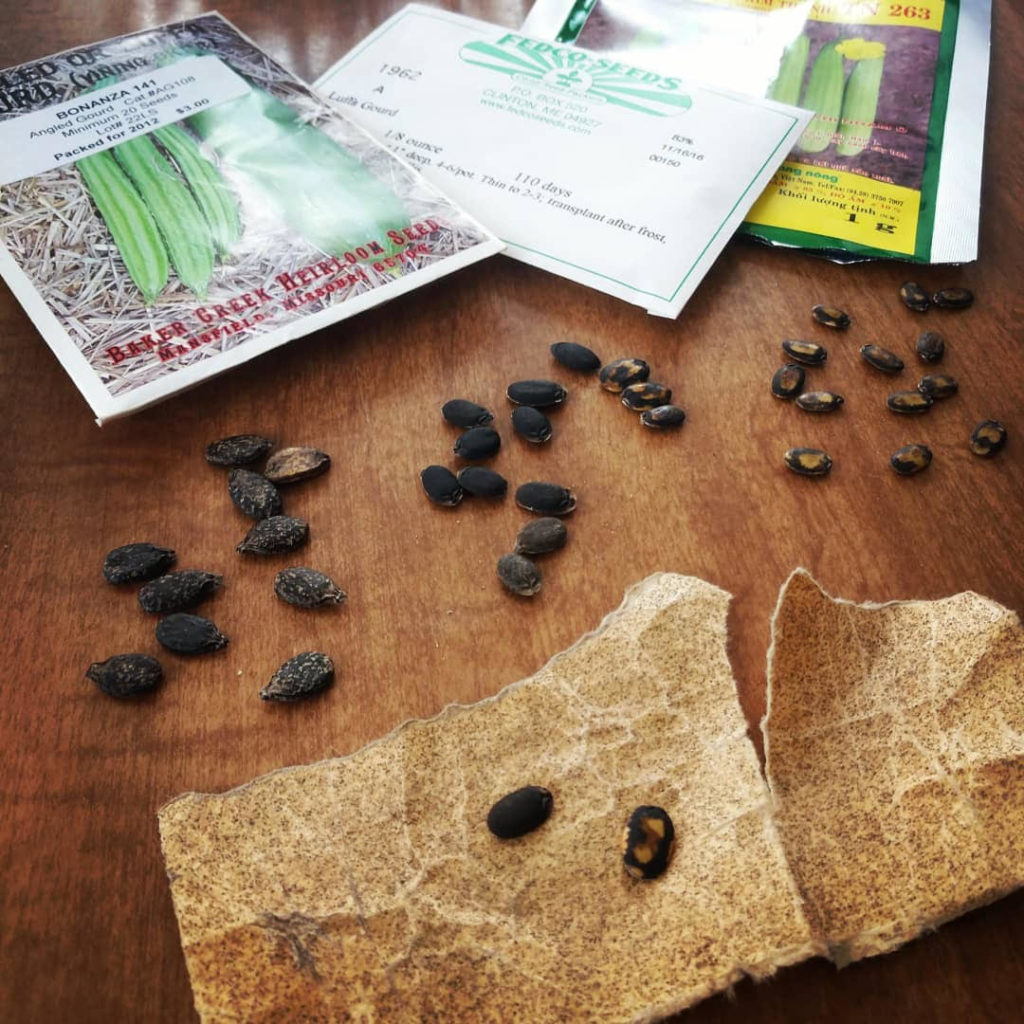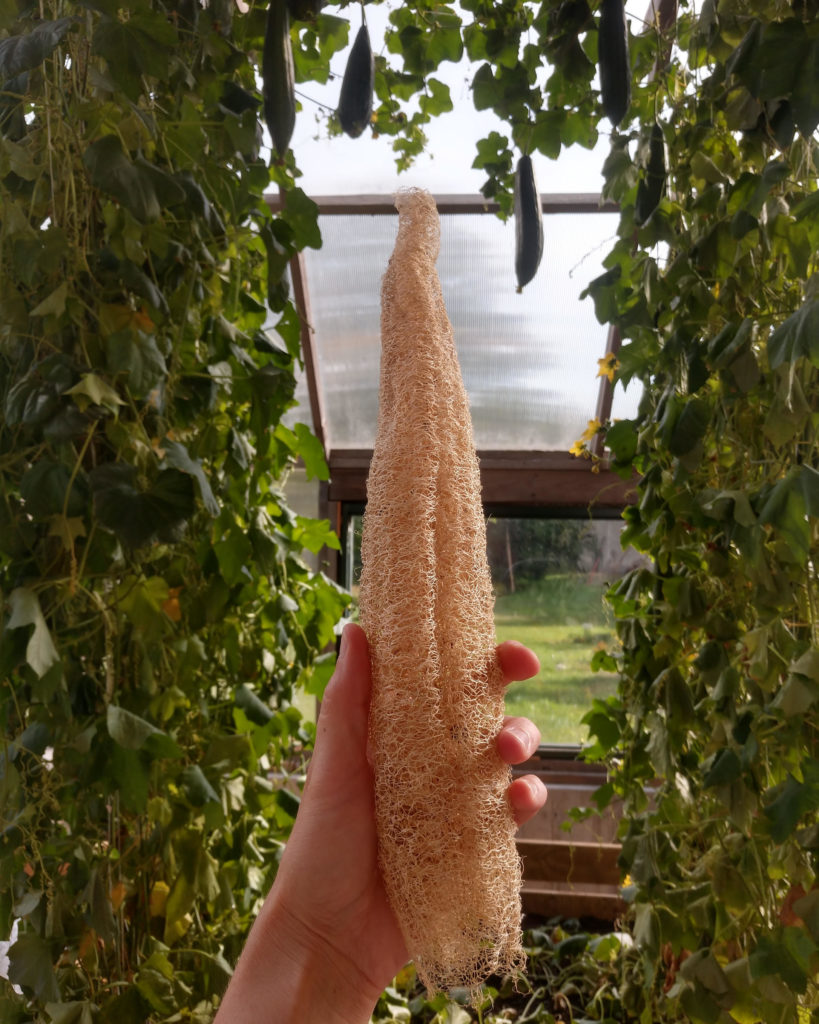How to grow eco-friendly sponges
Luffas make bathtime a little more fun. The fibrous natural sponges — not to be confused with the plastic puffs of the same name — gently exfoliate the skin and give your whole body a deep, sudsy clean. Contrary to popular perception, though, luffas are not sea sponges. They come from gourds that you can grow in your own home garden.

Brooke Isham, co-owner of lomah farmstead in Sangerville, started growing luffas two years ago to sell alongside her homemade soaps.
“We have chickens and sheep and bees and a big garden and greenhouse, and somewhere along the line I developed a soap making business, and that’s how I started growing luffas,” Isham said. “They’re just so much fun.”
Luffas belong to the Cucurbitaceae or gourd family, along with squashes, cucumbers and hard-shelled gourds. Also known as “loofas” or “loofahs,” the sponges come from two species of gourd: Luffa acutangula, the angled luffa, and L. cyclindrica, the smooth luffa. As its name suggests, the angled luffa has more prominent ridges, while the smooth luffa has a rounder profile, but the species are used interchangeably. Both are annual vines with punchy yellow flowers that grow into long green gourds, which hold the spongy fiber inside.
The first generation of Isham’s luffas didn’t develop as she hoped. She raised them in pots, and the gourds were relatively puny — a skinny 6 inches compared with the usual girthy 1 ½ to 2 feet. However, the second generation, which she grew in raised beds in her home greenhouse, were much more successful. She grew 12 plants, and each yielded at least two or three luffas. The fruits each grew about a foot long. She cut them into smaller pieces to sell.
“They have been really well received, especially for people looking for something made and grown in Maine,” she said. “Once they realize I grew it, people are really excited about it.”

What are luffas used for?
Luffa sponges are perfect for cleaning not only skin, but also dishes and other dirty surfaces. They can provide a biodegradable, natural alternative to conventional plastic sponges.
“They’re a gentle, exfoliating type of sponge,” Isham said. “A lot of people are using them on their skin because they look rough and scratchy. Once they’re wet, they’re really soft, [but they] won’t take Teflon off the pan. They’re not that abrasive.”
You can use your luffa sponges whole, or cut flat sections from the outer layer or crosswise slices to make smaller scrubbing pads (with convenient natural finger holes, not unlike the popular Scrub Daddy sponge).
“There are lots of different neat uses for them,” Isham said. ”You can cut them lengthwise and splay them out [so they] have a flatter surface [or] sew them onto a washcloth to have a scrubbier surface.”
Around the world, luffa gourd fibers are also used to make filters, table mats, insoles, sandals and other products.
Luffas are also edible. The flower buds and flowers can be breaded and fried like squash blossoms, and young fruit tastes like summer squash. Flowers and fruit can be enjoyed raw or sauteed in oil, stir-fried, cooked in soup, stews or curries, or breaded and fried. According to the U.S. Department of Agriculture, luffas are rich in vitamin A, manganese and potassium.
How to grow luffas
Isham said you can check your local nursery or garden center for luffa seeds and plants, or order luffa seeds from seed companies such as Fedco Seeds. Once you grow them, you can also save seeds from years before.
Luffas have a long growing season, so in places like Maine, they must be started indoors a few weeks before the last frost date. To start the seeds, Isham scratches the hard exterior of the seed with sandpaper — a process known as “scarification” — and soaks them with a damp paper towel on a heat mat.
“The scarification process helps the water penetrate the seed more easily,” Isham said. “If you think about how it would naturally propagate, [the seed] would be roughed up by the interior of the luffa, and that would help it to germinate.”
Isham waits to see if the seeds sprout before transferring them to potting soil. Luffa seedlings need well-drained soil and sufficient room in their containers so they do not become root-bound. After luffas begin to develop their first set of true leaves, they look almost exactly like cucumber seedlings. Before transplanting, harden off the seedlings in a shady spot outside during the day for about a week.
“It doesn’t like its roots disturbed, so transplanting can be kind of finicky,” Isham said. “I use biodegradable paper potting so roots can grow right through them.”
Luffas grow like a winter squash or hard-shelled gourds, thriving in full sun and a well-drained soil enriched with compost. Isham used a greenhouse to extend the growing season for her luffas, but she thinks it is possible to successfully grow them without one (plus, greenhouses come with their own issues — namely, in Isham’s experience, the proliferance of spider mites).

Luffas’ long, vigorous vines need either a sturdy trellis or ample room to vine out.
“You don’t have to have them trellised,” Isham said. “They do tend to grow straighter if they can hang. You can grow them on the ground, though there might be pest issues. We trellis them. [They grow] up and over the collar ties of our greenhouse hanging down, which is really fun to see.”
Isham said that luffas are also thirsty plants.
“They require a lot of water, especially in a greenhouse,” she said. “It’s sort of like a cucumber in that it’s really water-loving.”
In Maine, perhaps the biggest challenge to growing luffas is the short growing season. Lloyd Cowan, a gardener and hobby farmer based in Madison, attempted to grow luffas for about five years but was not especially successful because the tropical gourds did not have enough warm days to grow to their full potential.
“They got as much sun as they possibly could, but like some of our squash here, you need a nice long growing season, and I don’t think we always have that here in central Maine,” he said. “I think it’s a longer growing season would help.”
Cowan said that no matter where he positioned his luffa or trellises, his gourds only grew to be the size of a cucumber
“You can put them in the palm of your hand and wash up with them,” Cowan said. “They were not like the big ones you see in the store, but good enough for our use. They didn’t last as long as a luffa you buy in a store. They broke down.”

How to process luffas
Luffas are mature and ready to pick when the green skin turns dark yellow and starts to separate from the fiber inside. The fruit should also feel lightweight. Leave fruit hanging on the vine as long as possible for maximum sponge fiber development, but be sure to pick and peel the fruit immediately if they get hit by frost or develop rot.
“They can tend to get rot spots on them when they’re still on the vine,” Isham said. “You want to harvest them before they get those moldy spots. Most of the time you can leave them on the vine and they’ll dry like dry beans, but I tend to harvest them right before they fully dry out, right at the stage when they turn yellow.”
Cowan said that if you pick the luffas too soon, you will know right away.
“When you crack one open, it’s like picking an immature squash,” Cowan said. “You just know, ‘Wow, this could have grown longer.’ But when the frost is coming in, it’s like, ‘Just pick everything.’”
To process the luffa gourd into scrubby sponges, first peel the tough outer skin. Press the fruit gently until cracks appear on the husk, then pull the torn edges of the skin apart. If the skin is dry, soak the gourd in water for a few minutes to make it easier to remove.
“You can run your finger in between the outer skin and in between the sponge and the skin, and the skin just kind of peels out,” Isham said. “Then you shake out the seeds — I use a 5-gallon bucket, [and the] seeds just fall out — then you just give it a rinse and squeeze it out like you would a sponge.”
Spread seeds out on a paper towel and dry them at room temperature for a few days to save them for planting next year. Finally, air-dry the sponges in the sun, turning them frequently until completely dry. Store in a cloth bag to prevent them from gathering dust.
Some dermatologists warn against luffas altogether because of the bacteria and dead skin cells they can harbor, but others simply recommend washing and drying your luffas completely between uses, as well as replacing the scrubby every few weeks while tossing the old one in the compost or repurposing it as a cleaning sponge. If you do so, soak your favorite luffa in a diluted bleach solution once a week to keep it from accumulating germs.
Once a luffa is harvested and processed, though, it can last a long time. Isham said she still has some sponges from her first batch two seasons ago that she personally uses, and she has about 15 luffa sponges left in her inventory from last growing season that are still available for sale. After that, though, she will have to wait until next growing season to restock her product.
“I was hoping I’d have enough to go through summer, but it’s a good thing to sell out [of],” she said.
